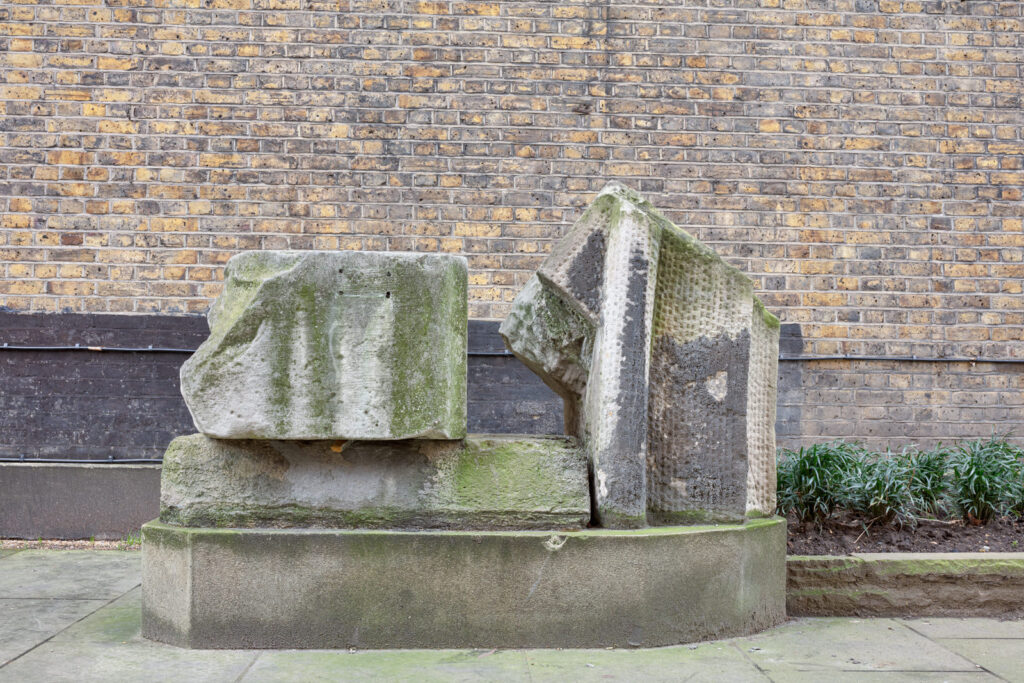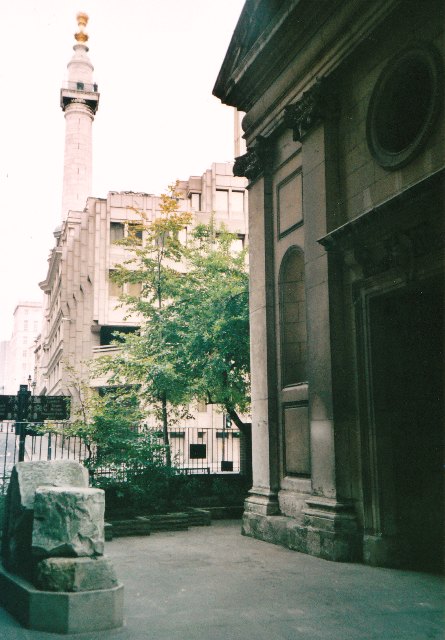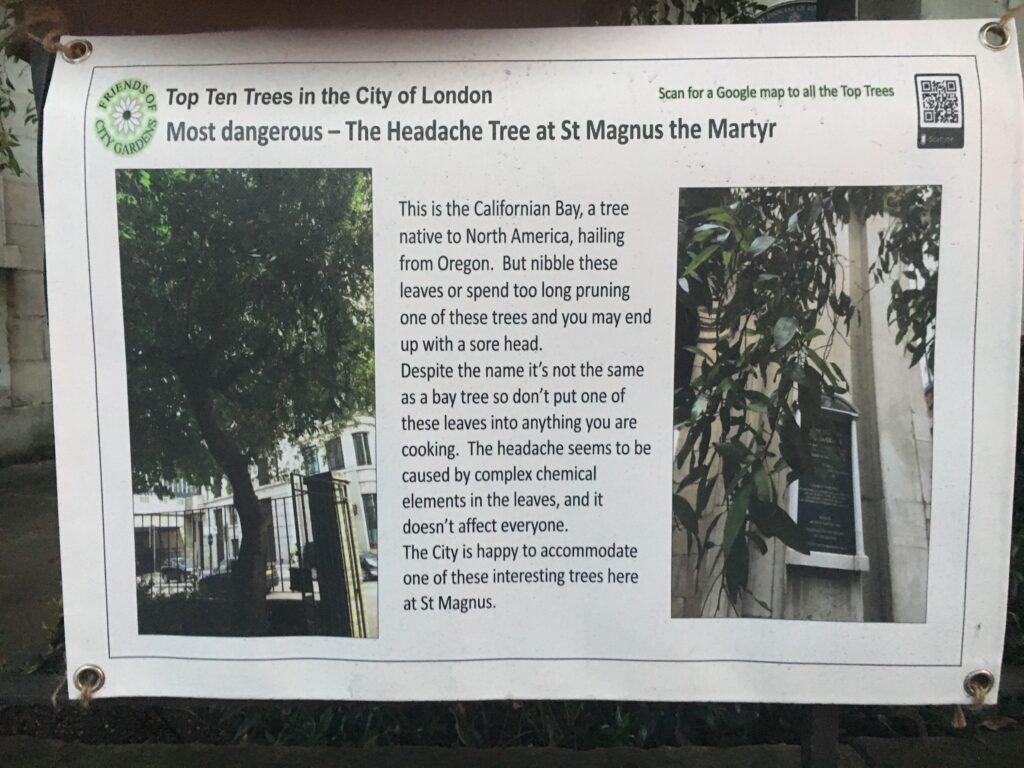
After the mediaeval bridge was demolished in 1831, St Magnus was granted part of the road to the west of the church to use as a courtyard in compensation for the loss of a detached churchyard removed by the construction of King William Street.

The next to last arch and one starling at the northern end of the old bridge were incorporated in London Bridge Wharf and Adelaide Place (to the south and east of St Magnus’s courtyard). The arch was rediscovered during redevelopment of the site for the construction of Adelaide House in July 1921.
Attempts were made to preserve the arch in situ, or alternatively dismantle and rebuild it at the forthcoming 1924 British Empire Exhibition at Wembley, but these efforts failed because of lack of money and the arch was demolished in October 1922. Some of the masonry from this arch was saved by the building contractors, McAlpines, including the three large blocks of Portland stone now displayed in the courtyard, which were part of the facing of the bridge. It is likely that the first arch at the northern end of the mediaeval bridge remains undisturbed under the sourthern part of the courtyard.

